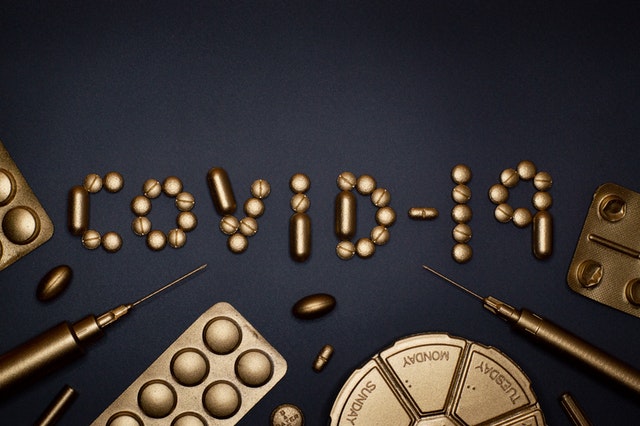New research continues to emerge surrounding COVID-19, specifically around how, mechanistically, the SARS-CoV-2 virus affects the body. A new study from Osaka University in Japan, revealed that the virus interferes with the insulin/IGF pathway.1
This new finding may explain COVID-19 symptoms including diabetes and insulin resistance; symptoms related to energy metabolism.
The insulin/IGF pathway key to energy metabolism and the cell life cycle
Insulin response is a normal bodily function that helps regulate blood sugar levels. For instance, when blood sugar is high, insulin is released, which causes blood sugar to be absorbed by surrounding body cells. This uptake allows the body to metabolize sugar.
The insulin/IGF pathway helps process these insulin responses.1 Insulin resistance can sometimes be acquired, which can lead to conditions such as diabetes, obesity, high blood sugar – hyperglycemia – and high triglycerides or cholesterol – hyperlipidemia. When the insulin/IGF pathway is impeded, insulin resistance can occur.
The insulin/IGF pathway also helps regulate the cell life cycle and cell death in the lung.
SARS-CoV-2 impedes the insulin/IGF pathway by increasing IRF1
Researchers used available data sets from previously infected COVID-19 patients by analyzing the transcriptome – the collection of expressed genes. Specifically, they monitored for genes that were over and under expressed in patients, live tissue models, and other non-living lab models. They compared gene expression in models infected with SARS-CoV-2 to those not infected.1
After analyzing the samples, researchers observed that SARS-CoV-2 caused an overexpression of IRF1, a protein that, when in excess, decreases activity of the insulin/IGF pathway.1 Again, the insulin/IGF pathway helps regulate insulin resistance, cell damage, and cell death.
This mechanism may help explain the acquired insulin resistance and onset of diabetes associated with COVID-19 illness.
These findings also add to previous research suggesting that IRF1 plays a role in tissue damage and cell death regulation; however, these findings enhance current literature by identifying a potential link between IRF1 and metabolic disorders such as diabetes.1
High IRF1 levels associated with severe COVID-19
Whole blood transcriptomes from patients infected with SARS-CoV-2 were analyzed; one test group contained 46 critical care patients in the ICU with respiratory failure requiring ventilation, while the second group included 23 patients in non-critical care. In those with critical COVID-19 symptoms, IRF1 was significantly upregulated compared to non-severe COVID patients.1 Additionally, gene expression associated with the insulin/IGF pathway was downregulated in critical covid-19 patients.
These results suggest that severe COVID-19 is associated with high amounts of IRF1 and the resulting downregulation of the insulin/IGF pathway.
IRF1 expression associated with risk factors for severe COVID-19
Certain factors including age, obesity, male sex, and diabetes were analyzed with respect to COVID-19 severity. These factors have been previously observed to increase the risk for severe COVID-19, however the reason for this link at the cellular level is not fully understood.1
There was more IRF1 expression found in the lung tissue of those at an older age, however this result was significant only in men.1 This results confirms that with higher IRF1 concentrations, those who are older and male are more prone to experience the severe COVID-19 illness associated with high IRF1 levels.
Another study tested the effect of an obese and diabetic model in hamsters. They found that these two factors increased the expression of IRF1 in liver cells.1 Another study looking at obese humans found that those who were obese had higher IRF1 expression in adipocytes – fat-storing cells.1,2 Again, these results relate to why obesity and diabetes could be risk factors for severe COVID-19.
DHT and DEX are potential therapeutics for severe COVID-19
Both dihydrotestosterone (DHT) and dexamethasone (DEX) (a hormone commonly used as an anti-inflammatory agent) were effective at decreasing the expression of IRF1 and enhancing the insulin/IGF pathway in SARS-CoV-19 infected samples.1
DHT is a hormone that tends to decrease with age, so this association confirms the observation that younger individuals are less likely to experience severe COVID-19.1
Further research needs to be done to understand the applications of these therapeutic agents in clinical practice. However, the newly confirmed link between SARS-CoV-2 infection and the insulin/IGF pathway will help provide more insight into COVID treatments moving forward.
References
- Shin, J. et al. (2022). SARS-CoV-2 infection impairs the insulin/IGF signaling pathway in the lung, liver, adipose tissue, and pancreatic cells via IRF1. Metabolism; 133: 155236.
- Lee, Y.H. et al. (2005). Microarray profiling of isolated abdominal subcutaneous adipocytes from obese vs non-obese Pima indians: increased expression of inflammation-related genes. Diabetologia; 48: 1776-1783.
Photo by Miguel Á. Padriñán at Pexels



